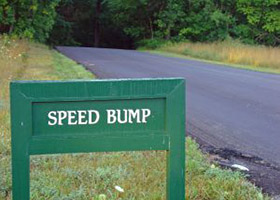

In advance of the conference, we asked Ronan a few questions about the benefits and risks of high-frequency trading and how to spot potential for abuse.
To find out more about Ronan’s presentation and the Risk Management Conference, click here.
What’s the problem with high-frequency trading?
It took Michael Lewis 80,000 words to explain it in a book! What I would definitely say is that we’re not anti-high frequency. I would say that high-frequency trading is very broadly defined – in fact, it’s not really defined at all. The whole thing is it’s about different forms of high-frequency trading and strategies. There are predatory strategies that exist and they use technology, that’s one form of high-frequency trading. Then there’s high frequency traders, and this relates to Canada, who arbitrage. Let’s take an example. The symbol for Blackberry is BBRY; it trades in Toronto, it trades in New York. There are times when a big trade goes off in one market and it puts the price out of skew. So, for a fleeting moment of time, the prices are very different, even with the exchange rates between those two cities. You have high-frequency guys who use microwave networks and everyone thinks they must be doing something bad. But they are just racing each other to those cities, they’re taking that FX risk and they’re bringing the prices in line. They’re actually contributing to an efficient market.
Apart from arbitrage, does high-frequency trading add liquidity?
That’s a really important question. With high-frequency trading firms, their defense is that they’re just market-makers adding liquidity. There are high-frequency strategies that the market-makers use and now they’re using technology to do so and they make markets. Absolutely, when they make markets, they provide liquidity. We have some high-frequency trading firms using us – less than 20% would be classified as high-frequency trading firms. Those firms trading on our venue are providing liquidity. They’re not just trading 100 shares. In certain instances, we’re seeing them put up 25,000 shares on either side of the quote.
It stems back to the question of whether it’s good or bad. There is good high frequency and bad high frequency. There was a really good report published last month that shows what happened in the Nordic markets as Nasdaq OMX came in and introduced updates to their matching engines – software that matches buy and sell orders. They made it 10 times faster. It was 2.5 milliseconds and they made it 250 microseconds. When they did that, they noticed that the spreads widened 32%. The market got 10 times faster but spreads widened. The explanation is that the low latency market-makers, the high-frequency market-makers, were getting picked off by hyper-frequency bandits. As the market got faster, these predatory strategies came into the market and made it harder for the true market-makers, even though they’re both doing it in a high-frequency fashion, to make markets effectively: they had to widen their spreads.
Can you abate predatory practices by using algorithms?
I think you can abate it, but the problem with an algorithm is that it’s just logic. A lot of times, brokers will just call it anti-gaming logic and all that is institutionalized randomness, if you will, and all of that can be discerned. I don’t think you can continually abate predatory strategies by using algorithms. Our approach to this, both when I worked at RBC and at IEX, is that we’re using technology to fight technology and we’re doing it through physics. The one thing that the predatory strategy needs is that signal as soon as possible so that they can react to it, whether on that same market or on different markets, and the way in which they garner that signal is by co-locating in the same room as the exchange. The exchange prints the trade. The person right next to them in the room clearly is the person who gets it sooner than anyone else. What we’ve done is take that out of play and we’ve put the front door to IEX in a separate building than where the matching happens.
To learn more about the Global Investment Conference, please visit the conferences section of the CIR website. If you are interested in attending this event, please email Alison Webb to be considered, as limited space available.
